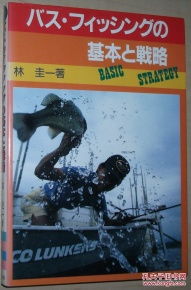Content:
Introduction: Fishing is an ancient and beloved pastime that has been enjoyed by people of all ages for centuries. Teaching someone the basics of fishing can be a rewarding experience, as it introduces them to a peaceful and enjoyable outdoor activity. In this article, we will provide a step-by-step guide with illustrations on how to teach others fishing techniques, ensuring that both beginners and seasoned anglers can benefit from the knowledge shared.
Understanding the Basics Before diving into the technical aspects of fishing, it's important to cover the basics. Explain to your students the following:
a. Types of fishing: There are various types of fishing, including freshwater, saltwater, fly fishing, and ice fishing. Introduce them to the different methods and what each entails.

b. Equipment: Discuss the essential fishing gear, such as rods, reels, lines, hooks, lures, and bait. Explain the purpose of each item and how to choose the right equipment for different fishing scenarios.
c. Safety: Emphasize the importance of safety while fishing, such as wearing appropriate clothing, using sunscreen, and being aware of your surroundings.
Casting Techniques One of the fundamental skills in fishing is casting. Here's how to teach casting techniques:
a. Hold the rod: Show your students how to grip the rod with a comfortable, yet firm, grip. Demonstrate the proper hand placement and explain the importance of maintaining a balanced grip.
b. Backcast: Illustrate the backcast by starting with the rod tip pointing towards the ground. Move the rod back in a smooth, continuous motion, keeping the line taut and the rod parallel to the ground.
c. Forward cast: After completing the backcast, smoothly bring the rod forward, releasing the line as the rod reaches its highest point. Practice this motion until it becomes second nature.
d. Practice: Encourage your students to practice casting in a wide, open area to improve their accuracy and distance.
Baiting and Lure Techniques Teach your students how to properly bait their hooks and use lures:
a. Baiting: Explain the difference between live bait and artificial bait. Show them how to thread live bait onto the hook, ensuring it's secure and won't come off during the cast.
b. Lures: Demonstrate how to attach artificial lures to the hook, emphasizing the importance of keeping them in good condition and replacing them when necessary.
c. Presenting the bait or lure: Explain the importance of presenting the bait or lure in a natural and appealing way to the fish. This may involve varying the speed, depth, and direction of the retrieve.
Reading the Water Teach your students how to read the water and identify potential fishing spots:
a. Observe the water: Encourage your students to observe the water's surface, looking for signs of fish activity, such as ripples, bubbles, or splashes.
b. Identify structure: Point out different types of underwater structures, such as rocks, logs, and weed beds, which can be prime fishing spots.
c. Study the terrain: Explain how the terrain can affect fish behavior and migration patterns. Discuss factors such as water depth, current, and temperature.
Setting the Hook and Reeling In Teach your students how to set the hook and reel in their catch:
a. Setting the hook: When a fish bites, quickly and firmly pull the rod tip down to set the hook. Demonstrate the proper hand movement and explain the importance of timing.
b. Reeling in: Once the fish is hooked, teach your students how to reel in the line smoothly and steadily, avoiding sudden movements that may cause the fish to escape.
c. Landing the fish: Show them how to safely land the fish by guiding it to the boat or shore. Explain the importance of handling fish gently to minimize stress and release them quickly.
Conclusion: Teaching others fishing techniques can be a fulfilling experience that fosters a lifelong love for the sport. By following this step-by-step guide with illustrations, you can help your students develop the necessary skills to become confident and successful anglers. Remember to always emphasize safety, patience, and respect for the environment while enjoying the great outdoors. Happy fishing!












